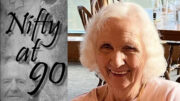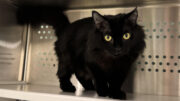Forget Game of Thrones. This is a Game of Secrets.
And it’s being played right now.
Hunters of a sort – armed with onion sacks and the like rather than firearms and bows – are taking to the woods, eyes to the ground. They’re seeking life amidst decay.
And when they find it, they’re not sharing.
Morel mushrooms are a prize too valuable. Their seekers generally keep the location of private hot spots private.
“I’ve been known to hide my morel bag in the woods if I get near the parking lot and see other cars there,” admitted Bob Sleigh, a long-time morel hunter and Western Pennsylvania Mushroom Club member from East Brady, north of Pittsburgh, with a laugh. “I only go back and get it when they’re gone. I don’t want anyone to know where I’m bringing them out of the woods.”
The vagaries of nature are the reason.
Morels are not the most reliable of mushrooms. They’re growing season is short, for starters.
“You’re going to figure the last two weeks in April, the first two weeks in May are generally your window,” said Walt Sturgeon of East Palestine, Ohio, a member of the Ohio Mushroom Society and author of several mushroom field guides.
But that’s only a general guideline, he said.
A number of factors, largely tied to weather, determine when morels pop up, he noted. Things really get going in most cases when ground temperatures hit 50 degrees or so. But moisture, sunlight, humidity and more all play a role.
“So instead of going off of the date, you should go off of what’s in bloom,” said Erin Shaw, a naturalist with Ohio State Parks, in one of a series of videos. “When the redbuds are in bloom, when the violets are blooming, when the trillium’s blooming, those are all peak season for mushrooms.”
There are some resources for tracking their progress. Online maps – from state-specific to national ones by The Great Morel – provide information on when the season is underway.
That guarantees nothing, though.
Morels are spotty. Locations that produce loads of them one season might not produce any the next. And for no obvious reason.
“There is no black and white with morels. None,” Sleigh said.
Certain areas are more likely to hold them than others, though.
They often thrive around elm trees, for example. Recently dead elm trees are especially good.
“You want to find where the trees are dying from Dutch elm disease or whatever. And just about the year after they die, when the bark starts to get a little loose and fall off, at that point you might find the bonanza under one of those trees,” Sturgeon said.
“I’ve found a hundred morels under one tree.”
Beneath apple trees is another good spot to look for morels, Sleigh said. Elm trees, sycamores and tulip poplar also host the mushrooms.
Early in the year especially he looks for morels on sun blanketed south-facing slopes. Ones with exposed rocks and boulders are best, as the stones soak up the warmth and transfer it to the ground.
Spots that recently underwent some kind of disturbance – from logging to prescribed fire — are also likely morel hot spots.
“They say there are three things that propagate morels: fallen trees, fire and flood,” Shaw said.
But wherever Sleigh finds morels, he studies closely the area’s “microclimate.” Then he seeks similar places elsewhere in the woods.
“Those morels are there for a reason. So you want to look around, see what’s there, figure out why they are growing there,” he said. “Then you want to duplicate that same situation, those same trees, those same plants, in other locations.”
Spotting morels, even in places where they grow in abundance, takes some practice, though.
Morels can get big. Sturgeon’s largest stood 12 inches tall.
Most, though, are 2 to 4 inches tall and maybe half as wide. As a result, they don’t necessarily stand out among the leaf litter of the forest floor.
So pace and patience are key to finding them.
“You don’t just walk through the woods like you’re on a trail. You want to stop, a lot. Don’t go too fast,” Sturgeon said.
Indeed, he said he often finds morels only when taking a break and sits on a log to rest or eat lunch.
Sleigh also suggests learning a skill all successful white-tailed deer hunters know.
“When you go deer hunting, you’re not looking for the whole deer,” he said. “You’re looking for an ear, a leg, a nose, a tail.
“So quit looking for the whole mushroom. You’ve got to look for parts and pieces of it, or even under leaves if you see them humped up in a way that looks a little odd compared to the rest of the leaves.”
He also prefers to look while walking uphill rather than down, believing a morel’s white stalk is easier to spot that way.
Bringing children and grandchildren along can help, too, Sturgeon said. Being shorter and closer to the ground, they are often better at finding morels than adults.
One last trick, recommended by the Iowa Department of Natural Resources, is to “imprint” the image of morels on your mind. Looking at morels daily, via pictures stuck on your refrigerator, desktop or elsewhere, can make it easier for your mind to spot them when in the woods, it said.
The only way to get really good at finding morels, though, is to just spend a lot of time looking for them, Sleigh said. Over time, the best hunters develop a gut feel for spotting what he calls “the snitch,” or the one morel that gives away the location of others.
The good news is all that looking is rewarding in itself.
“It’s a good hobby. Morels are a lot of fun,” Sturgeon said. “They’re as much fun to find as they are to eat.”
Identifying and eating morels
There are many varieties of “true” morel mushrooms in the woods, as well as a few “false” morels, some of which are poisonous.
How to tell the difference?
Beginners should consult a field guide or tag along with experienced mushroomers on events, like this one wpamushroomclub.org/events, being hosted by the Mushroom Club of Western Pennsylvania, said Bob Sleigh, who’s leading this particular event.
Websites like mushroomexpert.com are good resources, too.
But, as a general rule, so-called black morels generally show up first in spring, with grays and yellows — sometimes collectively referred to as blonds – following.
And all are easily identifiable – and different from false morels – in two distinctive ways.
One is their top, or cap. A true morel has a honeycomb cap, with sharp, defined edges.
“It’s not just wrinkled. It actually has distinct pits, just like a honeycomb,” said Walt Sturgeon, of the Ohio Mushroom Society. “Whereas the false morel is like a brain. It’s wrinkled.”
The other is the inside of the mushroom. Cut end to end vertically, a true morel will be hollow, Sleigh said. A false morel is full of what looks like a white cottony substance.
“If it’s not hollow, don’t swallow,” is an adage to remember, said Erin Shaw of Ohio State Parks.
Wash and cook them thoroughly. Some recipes can be found at www.iowadnr.gov.
Bob Frye is the Everybody Adventures editor. Reach him at (412) 216-0193 or bfrye@535mediallc.com. See other stories, blogs, videos and more at EverybodyAdventures.com.































